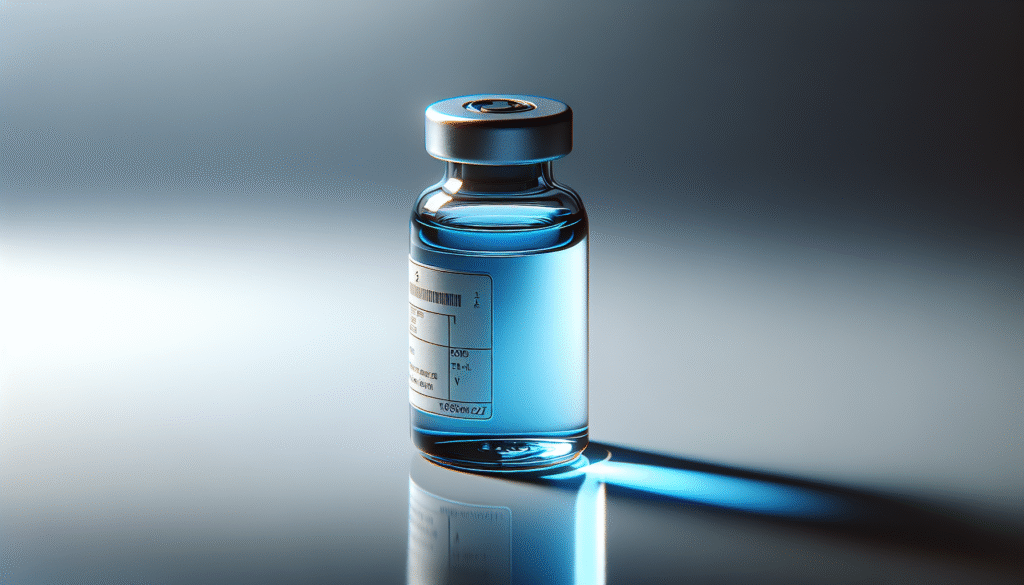
Have you ever wondered how to ensure the quality of the methylene blue products you purchase? Products vary widely in terms of purity, efficacy, and safety, making it crucial to understand how to assess their quality effectively. The following guide will provide you with insights and a structured approach to evaluate these products thoroughly.

Understanding Methylene Blue
Methylene blue is a synthetic dye that has been used for various purposes, from biological staining to treatment for certain medical conditions. Its versatility comes with specific quality considerations. To select high-quality methylene blue, you must first understand what it is and how it works.
What is Methylene Blue?
Methylene blue (MB) is a chemical compound with significant applications in both industry and medicine. It often appears in laboratory settings for staining microorganisms and cells, making it invaluable in research and diagnostics. Additionally, it has therapeutic applications, including treatment for methemoglobinemia and as a potential aid for various neurological conditions.
The Importance of Quality
Quality in methylene blue products directly impacts their effectiveness and safety. Impurities or substandard formulations can lead to ineffective results or even adverse effects. Therefore, understanding how to evaluate the quality is essential for consumers, researchers, and medical professionals alike.
Key Features to Assess
When assessing the quality of methylene blue products, several critical features merit your attention. This includes purity, concentration, packaging, vendor reputation, and regulatory compliance.
Purity and Composition
Purity is a fundamental characteristic that affects the performance of methylene blue. High-quality products should contain a high percentage of pure methylene blue with minimal contaminants.
- Purity Levels: Check for purity levels at or above 95%. Products marketed as “analytical grade” usually meet these standards.
- Contaminant Profile: Request or consult third-party verification for contaminants typically found in less pure products, like heavy metals or residual solvents.
Concentration
The concentration of methylene blue in a product influences its effectiveness. Verify whether the product provides adequate dosing based on your intended application.
- Measured Dosage: Look for clarity in dosage instructions or recommendations. This data will help you ensure you are receiving effective concentrations.
- Batch Testing: Reliable vendors usually provide batch test results indicating the specific concentration levels, giving you assurance of its efficacy.
Packaging
The packaging of methylene blue products often reflects their quality and stability.
- Material Quality: Opt for products packaged in dark, glass containers that protect the contents from light, which can degrade the dye.
- Sealing and Integrity: Ensure packages are sealed properly. Compromised packaging can lead to contamination or degradation.
Vendor Reputation
The vendor from whom you purchase methylene blue plays a critical role in the quality of the product. Vendors with established reputations generally prioritize quality control and customer satisfaction.
- Reviews and Ratings: Search for customer reviews and ratings online. Consistently high ratings can be an excellent indicator of product quality.
- Accreditations: Look for vendors with relevant certifications, such as ISO (International Organization for Standardization) or GMP (Good Manufacturing Practices), suggesting they adhere to stringent quality standards.
Regulatory Compliance
Products that meet regulatory standards typically undergo rigorous testing. Familiarize yourself with the relevant regulations imposed by authorities like the FDA (Food and Drug Administration) or EMA (European Medicines Agency).
- Labeling: Check that the product’s labeling adheres to regulatory standards, clearly outlining ingredients and usage instructions.
- Documentation: Request documentation that proves regulatory compliance if it’s not readily available. Transparency is key to understanding the product’s safety and effectiveness.
Testing Methods and Verification
To ensure quality, many consumers rely on testing methods to confirm their products meet expected standards. Several testing mechanisms exist that allow you to validate the methylene blue quality.
Third-Party Testing
Reputable manufacturers often submit their products for independent third-party testing, which verifies claims about purity and potency.
- Certificates of Analysis (CoA): Request a CoA from the vendor, detailing the results of the third-party lab testing. This document should include specific test results on purity and concentration.
- Transparency on Methodology: Understand the lab’s testing methodologies to gauge reliability. Recognized testing methods often employ High-Performance Liquid Chromatography (HPLC) for accurate purity assessments.
In-House Testing
Some vendors conduct in-house testing prior to product distribution. While this can be reliable, you should temper your expectations with a degree of caution, as potential bias can exist.
- Methodology Verification: Request details on the testing methods used. Established methodologies lend credibility to such tests.
- Regularity of Testing: Check whether testing is done on every batch. Consistency in testing suggests diligent quality control.
Consumer Experience
Another aspect of quality assurance is relying on user experiences. Engaging with others who have used the product can provide valuable insights.
- Community Forums: Join online forums or discussion groups where users share their experiences with specific methylene blue products. This can unveil details about efficacy and safety not found in product descriptions.
- Social Media Feedback: Check social media platforms for public comments, reviews, and experiences related to specific vendors or products.
Understanding the Label
Product labels often contain critical information regarding formulation, concentration, and instructions. By learning how to read labels effectively, you can make informed decisions regarding methylene blue products.
Ingredients Listing
While the primary ingredient should be methylene blue, it is essential to verify what else is included in the formulation.
- Inactive Ingredients: Be cautious of fillers or preservatives that could compromise product quality. A minimalist ingredient list is usually indicative of a high-quality product.
- Source Information: Information on the source of the methylene blue (e.g., synthetic vs. natural) can also inform your purchasing decision.
Instructions for Use
Proper usage is critical to the effectiveness of methylene blue.
- Dosage Recommendations: Ensure that the label provides specific dosage recommendations relative to your intended application.
- Safety Instructions: Review any warnings or safety instructions, particularly regarding potential interactions with other substances.

Applications of Methylene Blue
Understanding how and where to use methylene blue can also impact your assessment of its quality.
Medical Uses
In the medical field, methylene blue is primarily used in the treatment of conditions like methemoglobinemia and as a diagnostic tool.
- Methemoglobinemia Treatment: Discussions with healthcare providers about dosage and efficacy are critical. Ensure your product aligns with his/her recommendations.
- Antimicrobial Applications: Research potential uses in infection management. Quality can notably affect efficacy in these applications.
Industrial Uses
Besides medical applications, methylene blue finds usage in various industrial sectors, including textiles and polymer science.
- Quality Control in Manufacturing: If you intend to use methylene blue for industrial applications, confirm that the supplier meets industry-specific quality standards.
- Safety in Use: Understand safety protocols for handling methylene blue in industrial settings. Proper quality assurance helps mitigate risk.
Challenges and Misconceptions
In the pursuit of quality assessment, you may encounter challenges and misconceptions that could lead to poor purchasing decisions. It is essential to navigate these intelligently.
Misleading Claims
Some products may advertise themselves as “premium” or “high quality” without substantiating those claims.
- Evaluate Evidence: Always corroborate claims through testing results and reputational checks rather than taking marketing statements at face value.
- Avoiding Gimmicks: Be wary of products emphasizing “unique formulations” unless those claims are backed by substantial evidence.
Price vs. Quality
It is tempting to equate higher prices with better quality, but this assumption can lead to ineffective choices.
- Value Assessment: Focus on the balance of price against purity and potency rather than opting for the highest-priced options.
- Testimonials: Reach out to past users to discuss their experiences, which can provide insights that price alone does not convey.

Conclusion
In summary, assessing the quality of methylene blue products requires due diligence and a structured approach. By carefully evaluating aspects such as purity, concentration, packaging, vendor reputation, and regulatory compliance, you can make informed choices that ensure effective and safe usage. Additionally, engaging with community resources, third-party tests, and keen label reading can further enhance your purchasing decisions. Quality assurance in methylene blue is vital not only for optimizing benefits but also for ensuring safety in delivery and application. Implementing this framework will empower you to select high-quality methylene blue products suited to your needs.